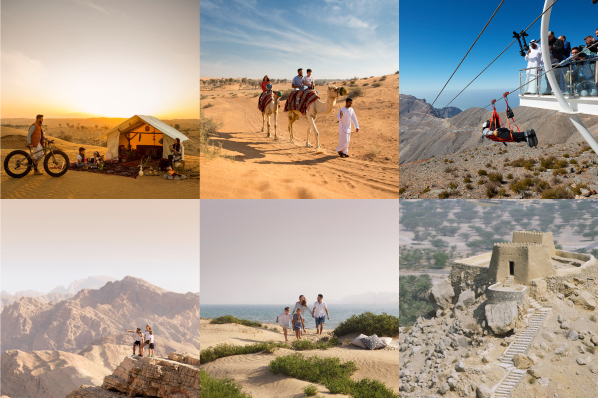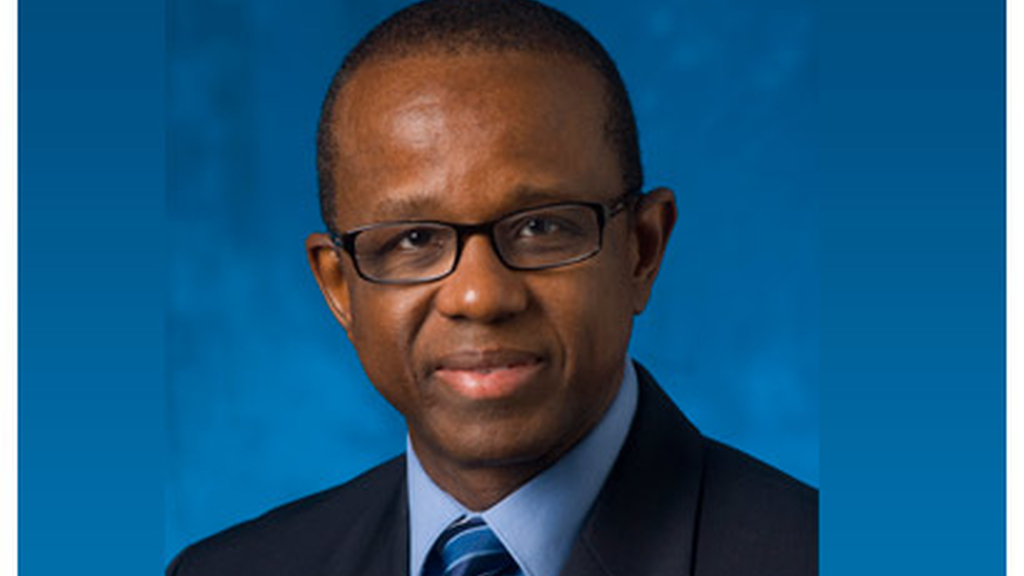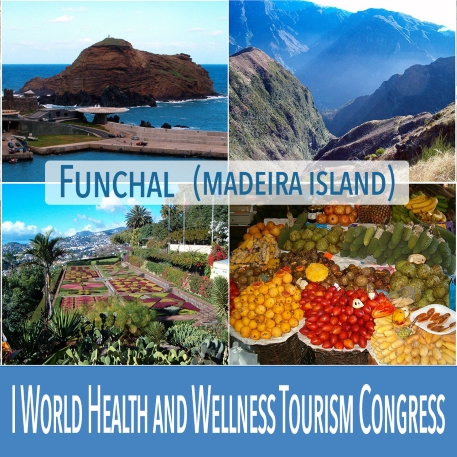

WTTC welcomes Turismo de Portugal as new Destination Partner
The World Travel & Tourism Council (WTTC) today welcomes Luis Araújo, President, Turismo de Portugal, as our newest Member and Destination Partner.
Mr. Araújo joins peers from Visit California, NYC & Company, Las Vegas Convention & Visitor Authority, and Ras Al Khaimah Tourism Development Authority to become our fifth Destination Partner in five months. This announcement thus marks WTTC’s first formal alliance/affiliation with a Destination Partner based in Europe.
The Destination Partner membership category – our newest member classification – amplifies the voice of major National Tourism Organisations (NTOs) and Destination Management Organisations (DMOs) from across the globe, and will serve to tackle issues within the Travel & Tourism sector such as overcrowding and crisis preparedness.
WTTC’s partnership with Turismo de Portugal follows a hugely successful joint-event hosted in Lisbon this month. On 11 September, WTTC and Turismo Portugal welcomed over 150 CEOs, Ministers and industry leaders from across Europe at our inaugural Europe Leaders Forum, to discuss key issues affecting the region’s Travel & Tourism sector including travel facilitation, sustainable growth, and the future of work.
Luis Araújo serves as President of Turismo de Portugal, the country’s national authority responsible for the promotion and development of tourism. Mr. Araújo was appointed President of Turismo de Portugal in 2016 following a varied career in law and government both in Portugal and Latin America. In his current role, Mr. Araújo is responsible for promoting the Portuguese brand, attracting sector investments, and overseeing training provisions of Travel & Tourism workers in Portugal.
Gloria Guevara, President and CEO, WTTC, said, “I am so pleased to officially welcome Luis Araújo as a Member and Partner of WTTC.
“Portugal is a well-established destination with its Travel & Tourism sector boasting a growth rate that is three times faster than the country’s economy as a whole. Indeed, Portugal’s sector is healthy and growing. According to WTTC, in 2017, tourism contributed 17% to Portugal’s GDP and supported 1 in 5 of all jobs there.
“The inclusion of Turismo de Portugal as a Destination Partner helps to broaden WTTC’s representation of the global Travel & Tourism sector, allowing us to more effectively advocate for tourism actors and key issues worldwide.”
Luis Araújo commented, “I am delighted to formally join the WTTC as a Destination Partner, and am wholly confident that this newfound partnership will be a great one for tourism in Portugal, strengthening our travel network and knowledge-sharing opportunities. Our recent collaboration at the Europe Leaders Forum led to a dynamic, thoughtful, and truly special event, which makes me hopeful for our new partnership and future ventures.”
eTurboNews is a media partner for WTTC.

Ras Al Khaimah to host PATA Annual Summit 2020
BANGKOK, October 8, 2018 — The Pacific Asia Travel Association (PATA) is set to organise the PATA Annual Summit 2020 from May 15-18 in Ras Al Khaimah, one of the fastest growing tourism destinations in the United Arab Emirates (UAE).
The announcement was made by PATA CEO Dr. Mario Hardy during the PATA Board Meeting on Sunday, September 16, 2018 at the Langkawi International Convention Centre in Langkawi, Malaysia.
The four-day event, to be hosted by the Ras Al Khaimah Tourism Development Authority (RAKTDA), will bring together international thought leaders, industry shapers and senior decision-makers who are professionally engaged with the Asia Pacific region.
PATA CEO Dr. Mario Hardy said, “Ras Al Khaimah has committed to supporting cultural, natural heritage and environmental preservation across the emirate, activities which are aligned with PATA’s mission in acting as a catalyst for the responsible development of travel and tourism to, from and within the Asia Pacific region. That is why we are honoured to be working with RAKTDA in bringing together our public and private sector members and partners to discuss the challenges and issues facing our industry.”
The Summit embraces a global forum for enhancing the sustainable growth, value and quality of tourism and includes a one-day conference, the PATA Annual General Meeting and the PATA Youth Symposium that allows students and young tourism professionals the opportunity to engage with senior industry leaders.
As part of the event programme, PATA in partnership with the World Tourism Organization (UNWTO) will also once again organise the UNWTO/PATA Leaders Debate which brings together senior executives from both the public and private sector to address thought-provoking issues currently affecting the industry.
Commenting on the announcement, Haitham Mattar, CEO of Ras Al Khaimah Tourism Development Authority, said, “We look forward to hosting the PATA Annual Summit 2020 in Ras Al Khaimah and introducing the destination to key international industry leaders and delegates from the travel and hospitality sector in the Asia Pacific region. Strengthening the Emirate’s MICE offer by showcasing our world class resorts, beautiful coastline and abundance of cultural and outdoor adventure experiences, will form an integral part of our Destination strategy as we aim to attract three million visitors by 2025.”
With over 7,000 years of fascinating history and culture, Ras Al Khaimah is the perfect getaway from everyday life. Offering magnificent landscapes, breath-taking coastlines and rich, terracotta desert planes, the emirate is an ideal getaway for both leisure and adventure travel as well as for business travellers.
With year-long sunshine and 64 kilometres of white sandy beaches, just 45 minutes from the busy metropolis of Dubai, Ras Al Khaimah presents an extensive selection of exclusive outdoor activities from mountain biking and kayaking to desert safaris, fishing and golf. Travellers can also have the unique experience of trekking the tallest mountain in the UAE, Jebel Jais, and descending via the world’s longest zipline. These experiences dovetail well with the premium accommodation, the eclectic selection of international gourmet experiences and the world class spas.

Secretary General of CTO: Critical role of the Caribbean in tourism
On Friday, October 5, 2018, at the Atlantis Resort, Paradise Island, in the Bahamas, the Secretary General of the Caribbean Tourism Organization, Hugh Riley, thanked the head table and other dignitaries and media for coming to the State of the Tourism Industry Conference (SOTIC) and delivered the following opening remarks at a news conference:
Let me first of all, publicly thank my colleague ministers for placing their faith in me by electing me on Tuesday as chairman of the Caribbean Tourism Organization. I’m humbled by their confidence, yet excited about the opportunity to help guide such an important regional institution for the next two years.
I’m also excited at the prospects for the CTO and the critical role it can play in unifying the Caribbean, not simply as a tourism destination, but as a people destined for greatness.
I’m convinced that a well-supported, well-funded, CTO can take its place alongside other venerable institutions to lift the people of the Caribbean to incredible heights that are attainable but not yet achieved.
The organization’s leadership in tourism and its contribution to the development of our human resources will help drive strong economies and build reliable, competent and productive workforces and Caribbean populations that are ready to face an ever-changing global environment.
The CTO’s leadership was on full display this week through the experts we brought together to share insights into how we can better build a lasting and sustainable tourism sector that will benefit every individual, every community, every country in this region.
We dared to challenge the region to build better, not just the infrastructure, but the entire industry. We explored applicable recommendations for the use of technology, not only to improve the visitors’ experience, but our lot as a people. We boldly tackled controversial issues such as commoditizing our cultures without exploiting them and embracing the Caribbean as a region of roots.
We brought these issues to the forefront not because they’re popular, but because we are convinced they must be successfully addressed sooner rather than later, if we are to truly build a Caribbean tourism industry for the future.
And there’s no better way to shape the future than to involve our young people. There isn’t a single person among those who were in the room for yesterday’s youth congress, or among the approximately three thousand people who watched it live on the CTO Facebook page, who will disagree with me when I say we have some of the most creative, imaginative and smartest young people anywhere.
They are the ones who will be challenged to continue building the tourism industry on the foundation that has been laid by today’s leaders and yesterday’s pioneers. Based on the strength of their performances yesterday, I’m confident that the future of tourism is bright.
In this context, allow me to congratulate the youth congress winner, Jamaica’s Bryanna Hylton, as well as St. Maarten’s Kiara Meyers and Caroline Pain of Martinique, who placed in the top three.
I know you’d also like an update on our The Rhythm Never Stops campaign; I’m happy to advise that the campaign will be launched this coming Monday, thanks to the public- and private sector stakeholders who contributed to this important first phase.
On the region’s tourism performance, it has been a tale of two situations. On the one hand, we have robust growth in countries that were not affected by last year’s hurricanes.
On the other, we have seen dramatic decreases in arrivals to those hit by the storms, although the performances of these countries are steadily improving.
Of the 22 reporting destinations, 13 of them registered increases in tourist arrivals during the first half of the year, ranging from 1.7 percent to 18.3, while seven recorded decreases of between a negligible -0.3 percent and 71 percent.
The top performing destination during this period were Guyana at 18.3 percent, Belize at 17.1 percent, the Cayman Islands at 15.9 percent, and Grenada at 10.7 percent and the Bahamas at 10.2 percent.
These individual results substantiate the regional messaging of the openness of the destinations for business and the confidence in destinations to deliver quality experiences.
The performances of the key source markets varied considerably, with some destinations recording strong growth, while others registered declines.
In the US market, for example, while Jamaica reported growth of 8.4 percent, the Dominican Republic was up by 6.3 percent and 11 other destinations achieved growth, six of which were by double digits, the Caribbean received Seven million visits from the US during the first half of the year.
This was a 15.8 percent decrease when compared to the corresponding period last year, due mainly to a 54.6 percent fall in arrivals to Puerto Rico and decreases in arrivals to Cuba.
On the other hand, there was a new record in arrivals from Canada for this time of year, with 2.4 million overnight international tourists, representing a 4.7 percent increase.
Arrivals from Europe also increased, though marginally at 0.3 percent, with three million tourists visiting the Caribbean during the first half of the year.
Belize led the way with 24.3 percent growth, followed by Guyana at 9.4% percent, Curaçao 6.2 percent and Saint Lucia at 4.5 percent. However, overall growth was impacted by steep falls in arrivals to Anguilla, Puerto Rico and Bermuda.
There was also a marginal decline of 0.5 percent in cruise visits, although there are signs of improvement. Of the 23 reporting destinations, 15 realized improvement upon their 2017 performances with Trinidad & Tobago registering increases of 166 percent, St. Vincent & the Grenadines up by 84 percent and Martinique at 54.7 percent, leading on growth rates.
However, this was countered by declines of nearly 90 percent in the British Virgin Islands, Dominica was down by 88.4 percent, St. Maarten down 27.5 percent, and the US Virgin Islands decreased by 22.5 percent. Puerto Rico, though hurricane-impacted, posted a 1.1 percent increase during the period.
The region’s competitive advantages of a diverse tourism product and safety and security are still intact. Destinations are rebuilding, and new tourism products and services are being restored daily in the destinations impacted by last year’s hurricanes.
Our research department anticipates an overall decline of between three and four percent this year, but predicts a 4.3 percent increase next year.
Cruise, on the other hand, is projected to grow by five percent to six percent this year.
Let me take the opportunity to thank Minister Dionisio D’Aguillar, director general Joy Jibrilu and team at the Bahamas ministry of tourism, as well as our own CTO staff for working so hard to pull off a wonderful State of the Tourism Industry conference, and I thank you for your participation.

“It’s Almost Too Late.” ICTP President to World Health Tourism Congress
In a strong keynote address to Tourism Experts, Doctors and Students gathered on the Portuguese Island of Madeira, Professor Geoffrey Lipman Co-Founder of SUNx – the Strong Universal Network said that the industry is running out of time to craft a meaningful response to the existential challenge of Climate Change.
He said that “Health Tourism – nature and medically linked – may well be in a sweet-spot of tourism growth, at more than 10% a year… but without a climate resilience strategy it will be equally vulnerable to the ravages of extreme weather and the consequences in terms of floods, fires, droughts and climate refugees”.
Lipman pointed to the heat patterns in the Northern hemisphere, the droughts in Australia, the typhoons in Japan and Philippines– as well as last year’s devastating Caribbean Hurricanes and this years’ US floods and forest fires.
He noted that “in the past decade more than 20 million climate refugees had already emerged – this is the tip of a humanly tragic and politically disruptive iceberg”. It will only worsen as we head towards 3o – which is where we will be in 2050 if we don’t make radical behavioural changes. As a leading sector Tourism must be in the forefront of those changes.
Lipman profiled the SUNx network to galvanise tourism destinations and to link the enormous body of research being done at Universities around the world, as well as the data and analytics from committed organizations inside and outside the Travel and Tourism sector.
SUNx has developed a framework for Climate Resilience and Innovation Centres in every country by 2030 – supporting Paris Climate Accord targets and linked to SDG 13. They will be pop up SUN Arks, cloud connected and filled with young bright climate champions, talking to each other about “Smart Impact-Travel” solutions. He defined these as “Travel & Tourism planning that’s measured to manage: green to grow: 2050 proof to innovate. Not so much detailed, definition-based programs but more a direction for change that every travel product needs to reflect, and every travel company or community needs to embrace.”
He also outlined SUNx lifetime learning approach with a Dodo cartoon series for kids, online University courses, a universal portal, focusing the most useful climate data analytics, and Strong Legacy Scholarships for graduates. The first of these will launch in 2019 in collaboration with t-Forum and the IRiSS the Italian Services Research Centre. This is complemented by an annual Climate SmART Award for Museums, as the ultimate learning centres.
Finally, he discussed the partnership project with TraNeXus, designed to bring Blockchain solutions to provide carbon accounts for travellers, which he believes will be needed as the Paris Climate Accords bite in the next decade and we will all have to deliver low carbon lifestyles.
SUNx will reach out to Communities and Corporations to help develop its Climate Resilience and Innovation System and build open links with likeminded Travel & Tourism organizations
Quoting Maurice Strong he said “the planet will survive as it has done for billions of years. It’s the people we have to worry about” He concluded with the Club of Rome’s call for action “Come On – It’s almost too late. …. but we can fix the problem if we act together, now.

International Day of Non-Violence at UN explores tolerance and understanding
Prestigious statesman, peace activists, and highly-acclaimed leaders gathered in New York earlier today to commemorate the anniversary of Indian activist, Mahatma Gandhi’s birth. Internationally recognized as “Non-Violence Day,” the United Nations played host to a day of discussions around the future of conflict-resolution and ways to improve tolerance and understanding in the modern world.
The impact of technology was an important theme. While access to the Internet has been found to foster improved positivity, increased awareness and acceptance of other cultures, questions remain about its role in spreading intolerance.
Gianpiero Lotito, Founder and CEO of Italy’s highest-valued technology business, the European Search platform FacilityLive, explored how digital technology can help peace processes.
Gianpiero Lotito commented: “Technology enables us to protect against threats. Thanks to technology, we are able to fight terrorism, cyberterrorism, digital warfare and physical war to protect people. But, paradoxically, technology also creates these threats.”
The topics explored at the inaugural ‘Non-violence in Action’ meeting have become more significant in recent years in light of the increasing prevalence of extreme ideologies, violence, terrorism and armed conflicts. As the first non-governmental and non-political Italian invited to give a speech at the United Nations in more than 20 years, Gianpiero shared a vision for a more united Europe.
Gianpiero continued: “The combination of technology and peace is so important. That’s why working on a more human, more inclusive and less worrying technology becomes a mission. We don’t know if the future memory of humanity will be preserved by digital libraries as it was for those printed on paper.
“We need to be careful: if we transfer the world’s collective memory only in a digital format, we don’t know today what the long-term effects of this paradigm shift will be. We cannot risk discovering in two hundred years’ time that we were wrong about technology’s ability to preserve information, and that we left a hole in the memory of humanity. Only by returning to a more ethical, more human and more useful dimension of technology, will we respect our mission as technologists, people of peace, and humans.
“My generation has destroyed the dreams of some of the younger generations. I believe that it should be our mission to give them back the dreams that our parents and our grandparents, who lived during times of war, offered us. They had the desire to give their children and grandchildren the opportunity to live in a better world, a world of peace.”
Other speakers at the event included:
• Ms. Maria Fernanda Espinosa Garces, President of the UN General Assembly
• Mr. Achim Steiner, United Nations Development Program (UNDP) Administrator
• Ms. Jan Beagle, UN Under-secretary General
• Ambassador Tanmaya Lai, Permanent Representative of India to the UN
• Mr. Michael Nagler, Founder and President of The Metta Center
• Mr. Johan Ernst Nilson, from the Non-Violence Project Foundation
• Ms. Navina Haidar, Curator of the Department of Islamic Art at the MET
